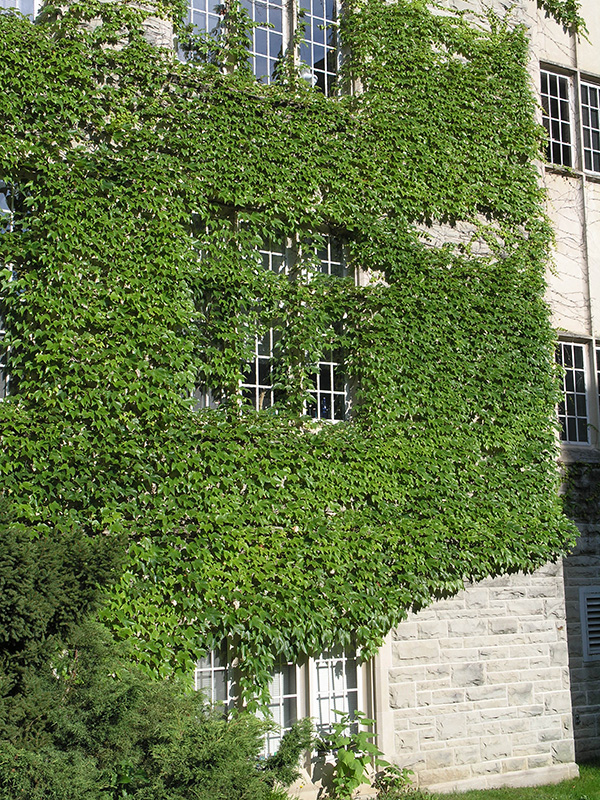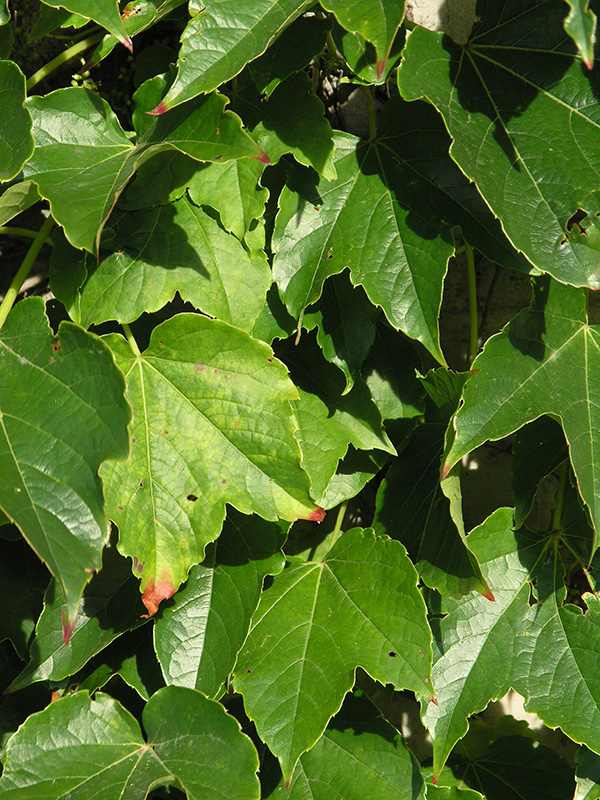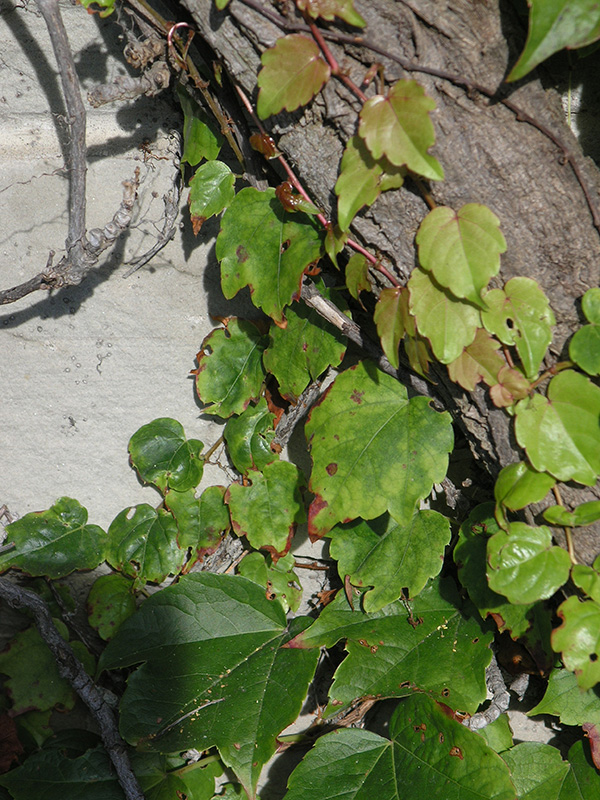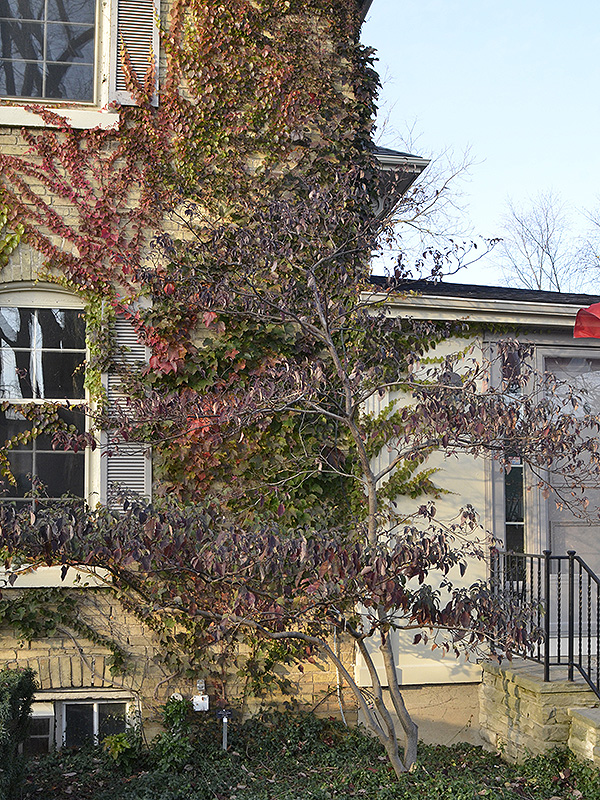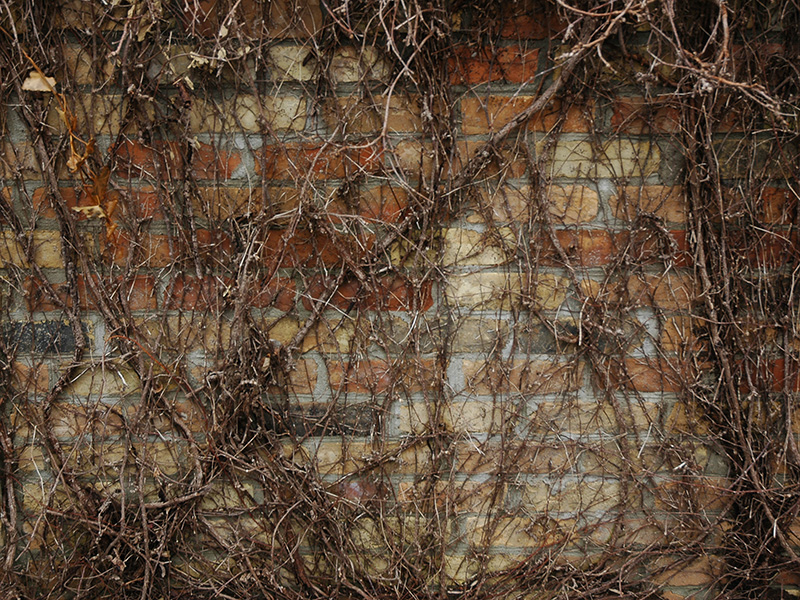
Woody > Parthenocissus > Parthenocissus tricuspidata > Parthenocissus tricuspidata
Parthenocissus tricuspidata
Boston Ivy
Origin: East Asia.
Mike's
Opinion


"
A very vigorous vine grown primarily for its foliage and autumn colour. Its glossy green leaves and autumn colour of yellow orange is quite striking.
Michael Pascoe, NDP., ODH., CLT., MSc. (Plant Conservation)
"
| Family |
| Vitaceae |
| Genus |
| Parthenocissus |
| Species |
| tricuspidata |
| Category |
| Woody |
| Pronunciation |
| USDA Hardiness Zone |
| 4 - 8 |
| Canadian Hardiness Zone |
| 2a - 8a |
| RHS Hardiness Zone |
| H7 - H4 |
| Temperature (°C) |
| (-32) - (-7) |
| Temperature (°F) |
| (-25) - 20 |
| Height |
| 15-25 m |
| Spread |
| 10-12 m |
Photographs
Description and Growing Information
Flowering Period
| General Description |
| Low growing ivy that will attach itself to walls with little brown rootlets. It has good colour and is very hardy. |
| Landscape |
| Often seen on old buildings, it is a suitable vine softening the look of bare walls including highway sound barriers. |
| Cultivation |
| Full to light shade, and fertile to loamy soil. |
| Shape |
| Vine, sprawling. |
| Growth |
| Fast |
| ID Characteristic |
| Dark glossy, palmate leaves that are up o 15cm across. Fruit appears in late summer and looks like miniature black grapes. |
| Pests |
| Canker, leaf spots, powdery mildew, wilt, downy mildew, leaf hoppers, beetles and scale maybe problems. |
| Habitat |
| East Asia, and mid to northern parts of North America |
| Bark/Stem Description |
| Brown to sandy brown-grey. |
| Flower/Leaf Bud Description |
| 2-3 exposed scales, sessile, brownish and often collateral. |
| Leaf Description |
| 3 lobed leaves, which are cordate-oval and crenate or undulate along the margins. Glossy on the upper surface and pale dull green below. |
| Flower Description |
| Green and not conspicuous. |
| Fruit Description |
| The colour of the fruit is bluish black. The fruit appears in September through October. The fruit produces 2-3 seeds, and is .5cm in size. |
| Colour Description |
| In the summer it is dark green and in the autumn it can range from dark green, burgundy, dark red, to orange red. |
| Texture Description |
| Bold, because of its large glossy leaves. |
| Notable Specimens |
| The University of Western Ontario, London, Ontario. |
| Propagation |
| It can be propagated by bare root, containers, cuttings, and by seed. |
References
Most garden centres
